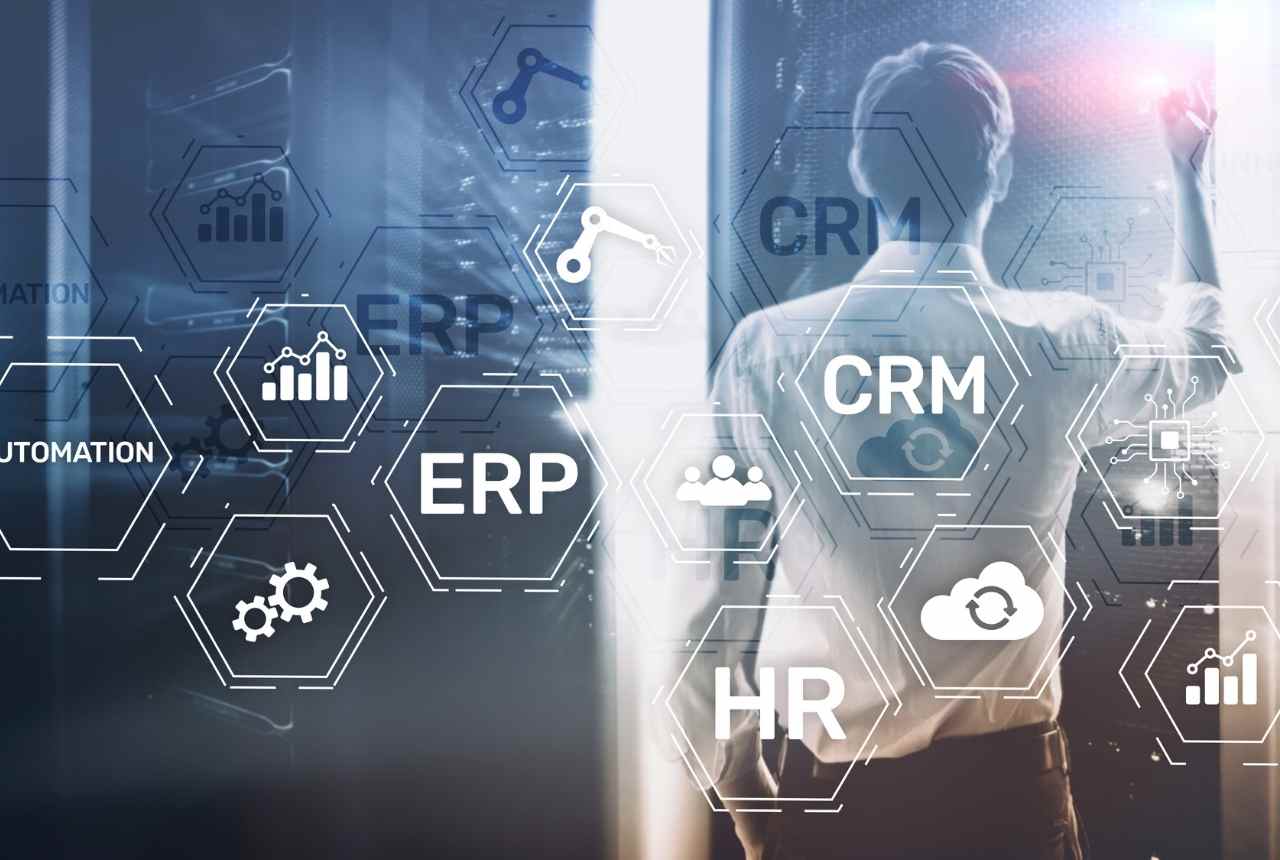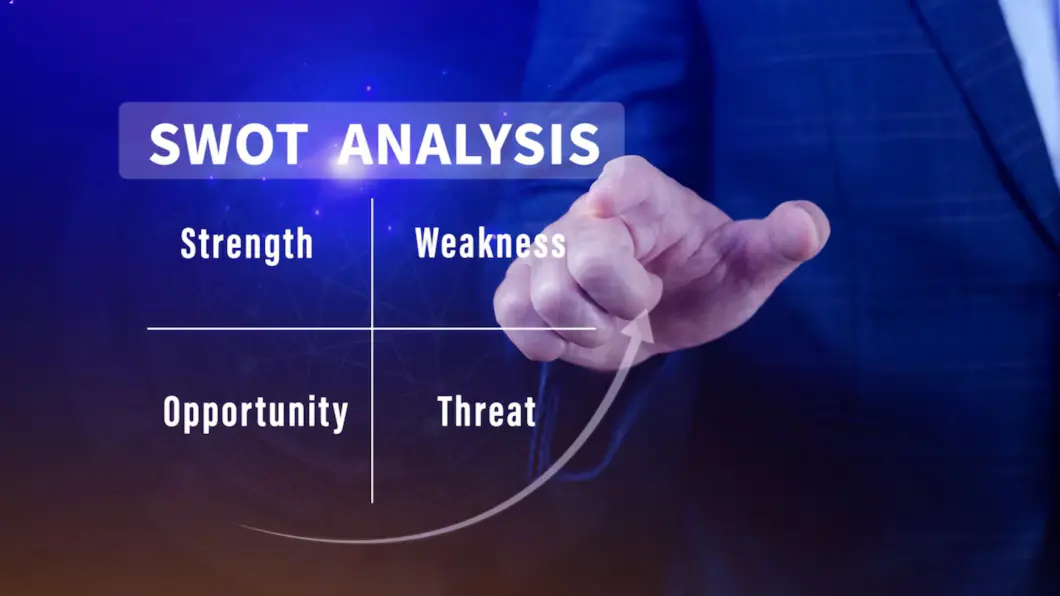What is ERP Integration?
ERP integration is the strategic process of connecting your ERP software with other critical business systems and tools for seamless data flow, providing a single source of truth across your entire organization.
The primary objective of ERP integration is to create a unified, data-driven business operation. As a result, it breaks down data silos, automates workflows, improves decision-making, and enhances operational efficiency. It prepares your business to respond faster to market changes and achieve your future growth plans.
ERP Integration With Other Business Systems
An organization may have multiple systems, such as CRM, HRMS, project management tools, business intelligence, etc. Extracting and analyzing data manually from each system is time-consuming and prone to errors.
ERP integration connects these systems and supports business expansion by easily adding new systems or business processes into the ERP ecosystem, which may require web services such as SOAP/REST communication protocols to facilitate integration with external systems.
A SaaSBoomi McKinsey study 2023 observed that India’s SaaS is on track to achieve $50-70 billion aspiration by 2030. ERP integration with SaaS-based platforms and AI-driven systems can unlock new productivity gains for organizations.
Now, let us explore ERP integration use cases and see how integrating an ERP system with your existing software and tools elevates your business.
→ Business Intelligence
To cater to the dynamic information needs of modern businesses, ERP system integrations with BI tools serve a critical role by mining data from internal and external systems of the organization. This enables executives to generate meaningful reports for faster, informed decisions.
→ Supply Chain Management
Tracking inventory flow from procurement to dispatch provides end-to-end visibility to the managers. Integrating Supply Chain management software with ERP solutions improves inventory efficiency, allowing proactive stock reordering before it falls below predefined thresholds.
→ Customer Relationship Management
Today’s competitive times require sales teams to stay one step ahead. While CRM software can track key metrics like lead conversion rates and average deal size, cloud ERP integrations enable CRM to connect with production floor data and improve customer experience through real-time updates.
→ Payroll and HR Management
As a backbone for managing a modern workforce, HR and payroll software streamlines everything from recruitment, payroll, to attendance and leaves. With ERP integration, your HR strategy goes to a whole new level, allowing you to view your employees as assets through comprehensive human capital management.
→ Accounts Payable
Connecting your AP automation software with your ERP software system streamlines the invoice-to-payment cycle. ERP integration connects your finance operations directly with vendor invoices and general ledgers, ensuring on-time and accurate payments.
→ Project Management
Whether it is your resources, tasks or schedules, project management software helps you track, organize and collaborate with teams on multiple projects. Imagine how easy it would be to manage projects when you can immediately view new recruitments, inventory and resources procured.
→ Enterprise Asset Management
For an asset-intensive organization, managing physical assets, equipment, and infrastructure is a drain on resources if not managed well. ERP system and asset management software integration ensure planned asset maintenance and disposal within budget throughout their asset lifecycle.
→ Product Lifecycle Management
Product lifecycle management (PLM) software records a product’s journey from research and development to production, sales and phase out. Businesses can respond faster to market dynamics and ensure faster time to market with the collective power of ERP and PLM software.
→ E-commerce
Modern e-commerce tools have played a major role for D2C players by enhancing customer shopping experience and increasing sales. Integrating e-commerce capabilities with ERP systems enables seamless data flow between online stores and backend operations of procurement and inventory.
« Also Read : How OpenAI and ERP Integration is Transforming Business Dynamics? »
Types of ERP Integration Methods
The process or method you adopt for ERP systems integration depends on the number and type of business applications in your existing environment, cloud-based and on-premise systems, and the complexity and scalability requirements of your business. The following are the ERP integration methods deployed in the manufacturing industry.
→ iPaaS (Integration Platform as a Service)
iPaaS is a data integration platform-as-a-service deployed on the cloud that enables manufacturers to connect various SaaS, cloud-based applications and on-premise business management software into a single, integrated system. This type of ERP system integration gives you the flexibility to connect and access real-time data from multiple business applications at scale. It automates workflows while eliminating data silos and the need for manual data entry.
→ Enterprise Service Bus (ESB)
An enterprise service bus is a central platform that allows you to share data from one application to another. ESB uses software components called services that perform specific business functions like checking inventory or processing payments. This ERP integration method makes it easier to integrate legacy systems, although it can get complex and lead to communication failure if not managed well.
→ Point-to-point (P2P) Integration
Point-to-point integration is a direct, one-to-one connection between your ERP application and another application, such as CRM, achieved using custom coding, without any middleware complexity. Such an integrated system is okay to use when there are fewer applications in the IT environment. However, as organizations add more applications, P2P ERP integration is difficult to scale, and you can’t get a unified view of how systems interact.
→ API-based Management
API-based ERP integrations use standardized APIs to enable real-time data exchange between different systems, such as a warehouse management system, mobile apps etc. These well-defined application programming interfaces (APIs) manage access control and automate business processes while allowing external third-party apps to securely connect with your ERP solution. A future-proof ERP implementation makes it easier to build and evolve APIs later.
Key Advantages of ERP Integration
Leading ERP systems such as Sage X3 come with built-in tools that make it easier for developers to integrate ERP with other business tools so that important organizational data, including customer data, vendor, inventory and business intelligence data, flows automatically across applications.
Let’s look at the various benefits of ERP integration.
→ Centralized Data Management
ERP system integration creates a single point of data access through a unified ERP user interface. It eliminates data silos, reducing errors and improving data accuracy.
→ Real-Time System Visibility
Modern ERP integration software adds to your existing ERP functions. With instant mobile access to data from multiple business applications, decision-makers can make faster, well-informed decisions.
→ Automated Workflows & Processes
ERP integration optimises your supply chain, with significantly reduced manual tasks. The agility and automation that your business processes gain ensure faster sales cycles.
→ Improved System Security
By connecting disparate systems built on different platforms and programming languages to a single integration platform, ERP integration simplifies IT maintenance and improves system security.
→ Regulatory Compliance
ERP integration tools help you maintain detailed audit trails of sensitive data exchanges between systems. Data encryption and authorized access ensure compliance with regulatory frameworks.
→ Faster Decisions
From real-time data access to automation across finance, purchase and sales, ERP integration gives you everything you need for seamless financial reporting and decision-making.
Hidden Risks of ERP Integration
Integration solutions are critical to business success, but they can be complex. Having an awareness of ERP integration challenges and risks you may be exposed to is important so that you can develop a comprehensive plan to meet your business objectives.
- ERP software not compatible with your existing tools can prevent smooth data flow. By choosing the best ERP software with advanced capabilities, you can mitigate this risk factor.
- Not having the right resources and technical expertise can create obstacles in your ERP integration project.
- Difficulty in standardizing data can lead to data mapping issues in ERP and not give you the desired results.
- Limited post-go-live support from ERP vendors can create bottlenecks in ERP integration.
- Integrating data could lead to data breaches. Penetration testing and role-based access control reduce the extent of such threats.
How to Ensure a Successful ERP Integration
Implementing an ERP integration project is a major decision that impacts all stakeholders. Following these steps will make sure that your ERP integration lifecycle is a success.
- Evaluate existing business processes and improvement areas
- List software/hardware specifications to see if your existing system is ready for ERP integration
- Develop a project plan, identifying the time, costs and resources needed
- Clean your data into a standard format for smooth information flow
- Run a compliance check to ensure you adhere to legal and internal policy rules when you connect systems
- Identify the training needs of employees with the changed system
- Test your system before launch to spot errors and fix them
- Monitor the integrated ERP system to ensure smooth business processes
Integrated Sage X3 ERP Delivers All the Functions You Need
Amid rising competition, the role of custom ERP integration has become even more critical. Advancements in ERP solutions and their integration with other business systems are bringing new levels of efficiency in business operations while reducing manual data entry tasks.
Sage X3 is a powerful ERP software with advanced integration capabilities for enhanced operational and financial control, leading to significant time and cost savings. From procurement and production to finance and sales, Sage X3 gives you a unified view of your entire business through a single user interface.
FAQs
1. What Is Meant By ERP Integration?
ERP integration is a process by which you connect your ERP system with other business systems and access data from those systems on the ERP’s user interface to save time.
2. Does My Business Require ERP Integration?
Look for these signs to know if your business requires ERP system integration.
- Are your teams using disconnected systems?
- Is manual data entry and tasks slowing you down?
- Do you lack real-time visibility across departments?
- Are you planning to scale your business?
- Do you frequently face compliance risks, such as GST and other legal hurdles?
If the answer to all the questions is yes, it is time for you to consider an integrated ERP system.
3. Can Sage X3 Integrate With Third-party Business Systems?
Yes, Sage X3 seamlessly integrates with a wide range of business systems, including CRM, eCommerce, and production software using APIs, connectors, or middleware like iPaaS, enabling real-time data flow and streamlined workflows.






